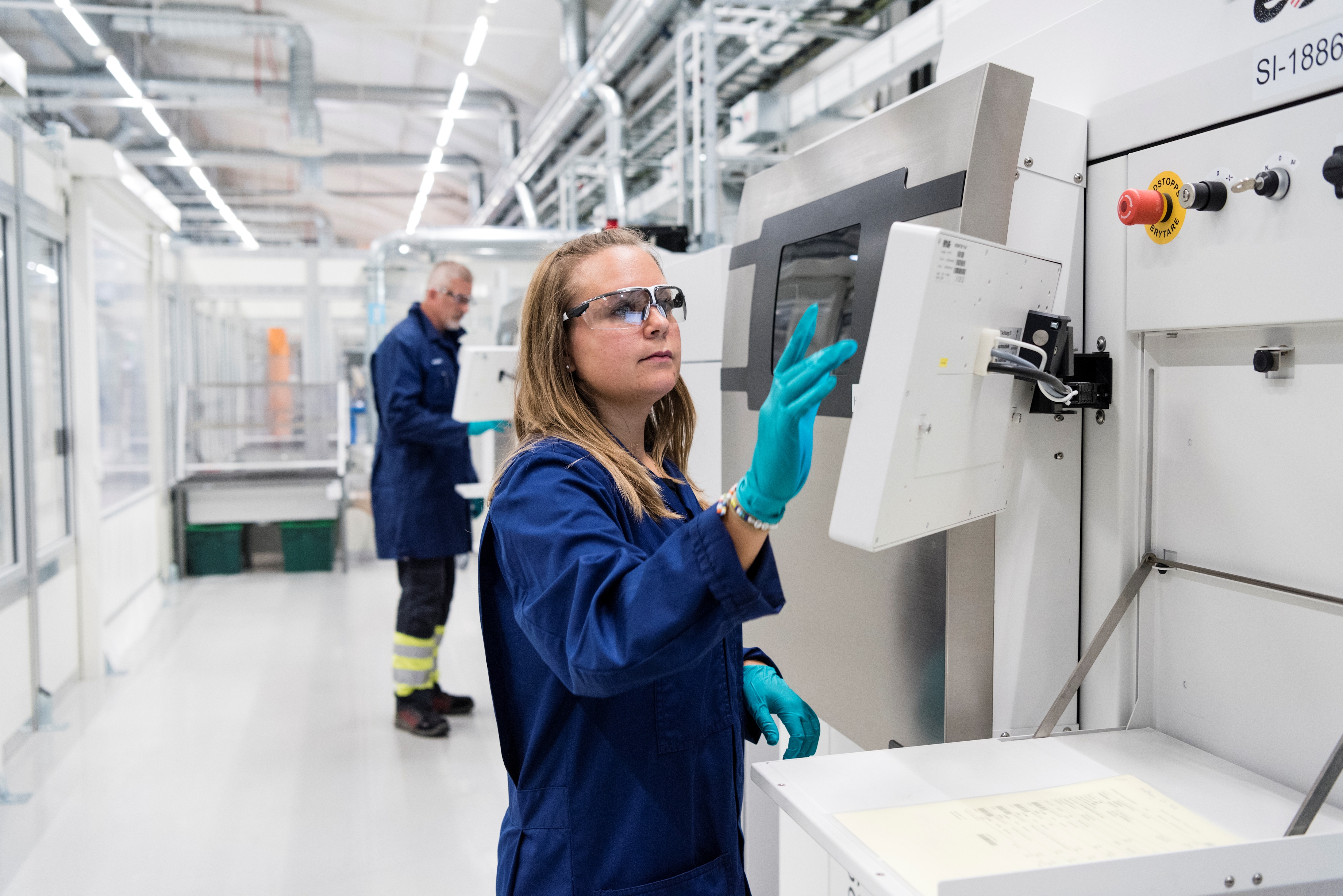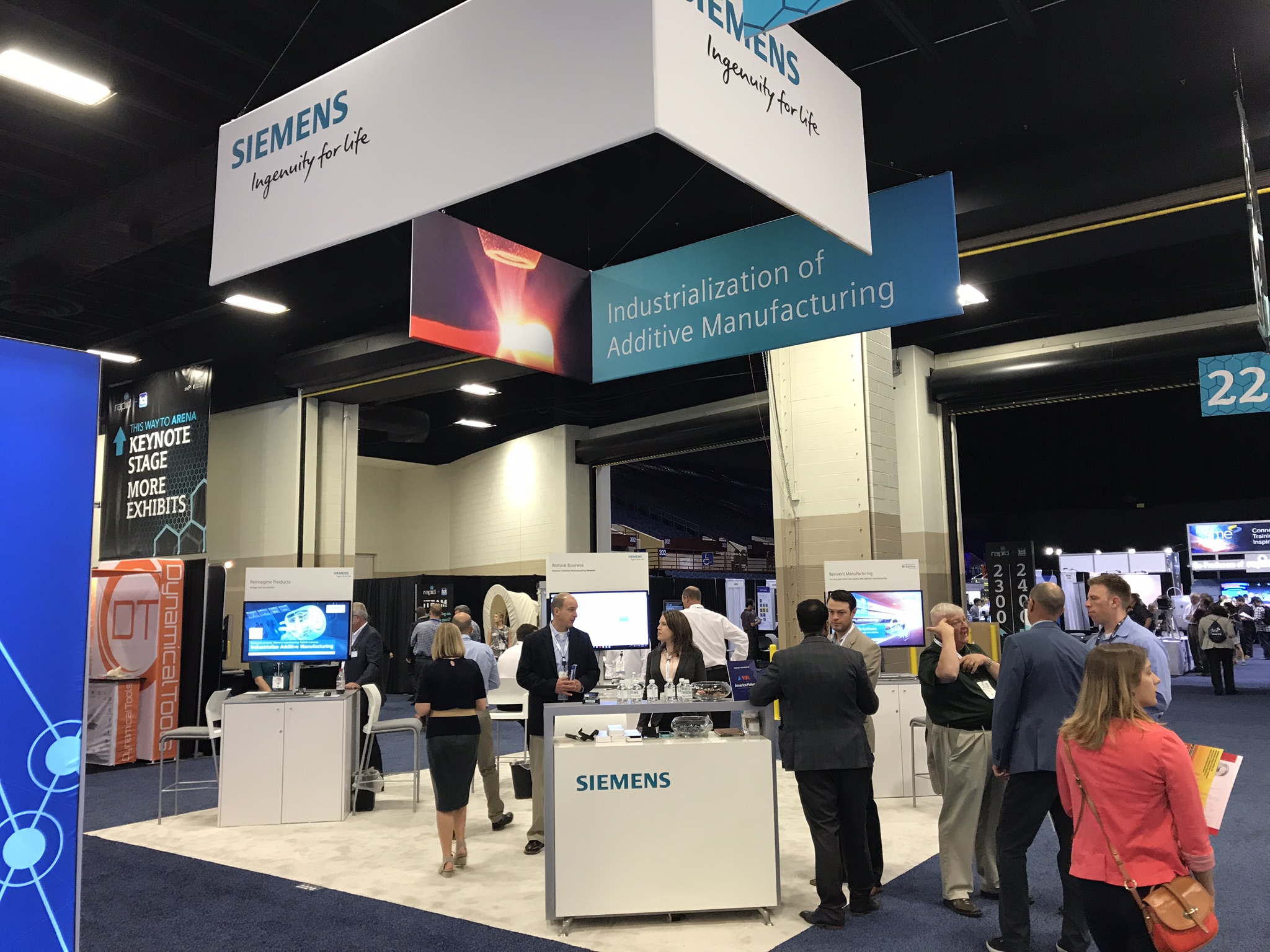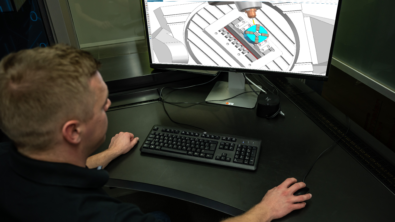Products
Plan to meet us at RAPID + TCT 2019 Conference

Don’t miss Siemens at RAPID + TCT 2019 – a conference where the additive manufacturing community comes together to share knowledge and learn what’s new from the industry’s most respected experts.
 We’re happy to announce that our exhibit will feature Siemens experts demonstrating our additive manufacturing solutions (NX Design, NX Manufacturing, and NX Simulation) all in one place to give you a complete learning experience.You will also be able to experience what Siemens has to offer for hardware vendors in the additive manufacturing space with automation solutions, robotics, and virtual commissioning.
We’re happy to announce that our exhibit will feature Siemens experts demonstrating our additive manufacturing solutions (NX Design, NX Manufacturing, and NX Simulation) all in one place to give you a complete learning experience.You will also be able to experience what Siemens has to offer for hardware vendors in the additive manufacturing space with automation solutions, robotics, and virtual commissioning.
Find us near the entrance to the exhibit hall in booth #1403.
You’ll also hear from Siemens experts during sessions
Additive Manufacturing of Turbine Blades
Fabian Sanchez. Senior Mechanical Design Engineer, Siemens Canada
May 21, 2019, 10:15 am – 10:40 am
In early 2017 the head of Siemens Joe Kaeser announced that at Siemens Lincoln the first successful full-load and full-speed engine tests for stage one gas turbine blades (SGT-400) completely produced using additive manufacturing was achieved. 3D printing facilities at Materials Solutions – a Siemens business in Worcester, UK, and in Finspang, Sweden, used Laser-Powder Bed Fusion (L-PBF) to rapidly produce the gas turbine blades. This was followed by a more excessive testing campaign of high- pressure turbine blades on the SGT-100. The second campaign was focused on the evaluation of design and lifting aspects of the respective components and to validate the material performance of the additively generated Ni-based superalloy.
Both, the engineering as well as the manufacturing of the complex components is a challenge. Hence, a sophisticated CAD/CAE chain is required to master the challenges of generating design ideas, optimize the design in various aspects, such as heat transfer and component life, and finalize the 3D models for production. The extended test campaign was able to validate the CAE tools applied and has proved a remarkable accuracy. Once the final design is available, the components are generated by a complex integrated production chain comprising additive and conventional manufacturing. It is of importance to properly interlink both worlds to succeed. The physical production line is assisted by a digital one, including elements such as process simulation, CAM file generation and the management of production data along the entire chain, resulting in a digital twin of the physical component.
Learning Objectives:
Understand the end-to-end manufacturing chain.
Grasp the benefits of the overall approach of fast technology validation.
Understand the advantages of a combined digital and physical production line.
Trends that Will Impact Your Future
May 21, 2019, 12:30 pm – 1:30 pm
The purpose of this panel is to share broad and interesting trends that could impact almost everyone in attendance. Among the topics to be discussed by leading subject matter experts: 1) The importance of design for additive manufacturing, 2) Justifying the cost of AM for production applications, 3) Challenges associated with post-processing and post-process automation, 4) Scaling AM technology across multiple locations, 5) Managing growth, 6) AM knowledge and skills development, and 7) Anticipating future developments.
MODERATOR: Terry Wohlers, Principal Consultant and President, Wohlers Associates, Inc.
PANELISTS: Markus Seibold, VP Additive Manufacturing, Gas and Power, Siemens AG, John Dulchinos, Vice President, Digital Manufacturing, Jabil, Inc.; Cynthia Flanigan, PhD, Chief Engineer, Vehicle Research & Technology, Research and Advanced Engineering, Ford Motor Company; Donald Godfrey, Engineering Fellow – Additive Manufacturing, Honeywell Aerospace;
Boosting Innovation and Performance Through Simulation-Driven Design and Manufacturing
Jeffrey Blanford, Senior Application Engineer, Siemens PLM Software
Dave Dietrich, PhD, Additive Manufacturing Design Engineering Fellow. Honeywell Aerospace
May 21, 2019, 1:45 pm – 2:10 pm
Navigation is paramount for vehicles, be those the car you drive daily or a satellite hurtling through space at breakneck speed. However, when it comes to satellite navigation, the problem is compounded by the necessity for system redundancy and extreme weight minimization. According to NASA, it currently costs $10,000 to put a pound of payload into Earth orbit, so weight reduction is of paramount importance when designing satellite parts. For this reason, Honeywell collaborated with Siemens to use their additive manufacturing software solutions to create an innovative, new Control Moment Gyroscope (CMG) for use in aerospace applications. Through a combination of simulation-driven design and manufacturing techniques, Honeywell was able to reduce the weight of the CMG while also maintaining the performance of the final part. This was all supported by a well-defined additive manufacturing workflow including a set of change management best practices. The outcome is a new state-of-the-art gyroscope design that has resulted in multiple patent applications and the real possibility of being flown in space in the very near future. This presentation will discuss the work done to create this pioneering new aerospace product using topology optimization, performance simulation, AM process simulation, and build execution software and how those same techniques can be used on other innovative designs produced using additive manufacturing. Furthermore, process steps and best practices for additive manufacturing change management will also be a topic discussed in-depth.
Learning Objectives:
Understand the evolving maturity of the additive manufacturing software market.
Take home best practices for additive manufacturing change management.
Relay to colleagues how tools like topology optimization and Convergent Modeling may be used to improve designs at their company.
Design for Additive Manufacturing in Industrial Gas Turbines
Wentao Fu, Specialist Engineer, Siemens Gas & Power
May 22, 2019 1:45 pm – 2:10 pm
Metal-based additive manufacturing (AM) technologies such as laser powder bed fusion (LPBF) have seen successful applications in the gas turbine industry over the past years. The rapidly growing demand in AM requires in-depth knowledge of the process, materials and design for additive manufacturing (DFAM). In this presentation, two case-studies will highlight the design considerations for AM to extract maximum benefits.
In 2017, Siemens began printing SGT-700 gas turbine burners using SLM technology and they were the first burners produced by Siemens’ intelligent burner manufacturing (IBUMA) program in Finspång, Sweden. Design improvements, such as the pilot-gas feed being part of the burner head instead of the outside fuel pipe, allow the operating temperature to be kept lower, thus contributing to a longer operational lifespan of the components and, ultimately, the gas turbines. Recently, the first burners completed their 8000th hour of operation!
In 2018, for efficiency increase, a first row Ring Segment of a SGT6-8000H gas turbine was redesigned for SLM including a customized in-wall cooling structure only viable through AM. The ring segment was tested in an engine at “Full Speed – Full Load” operating condition. This new cooling design provided for lower cooling air consumption along with lower temperatures leading to higher efficiencies and longer lifetime expectations.
With the added design space now afforded by Additive Manufacturing, new AM components are making new gas turbines even more efficient! This presentation will provide some of the design aspects considered for these two applications to extract maximum benefit from additive manufacturing.
Learning Objectives:
Appreciate a few of the unique design considerations which are available to the engineer when applying additive manufacturing processes
Witness the successful application of AM within some of the most demanding technical environments
Secure Distributed Spare Parts Production for Power Generation
Fabrizio De Pasquale, VP Business Development & Strategic Accounts, Identify3D
Vladimir Navrotsky, Chief Technology Officer,Siemens Service Distributed Generation and Oil & Gas
May 23, 2019 10:15 am – 10:40 am
The joint presentation by Siemens Power Generation and Identify3D will show an example of how digital manufacturing is redefining the supply chain, from design to manufacturing. We will introduce Siemens’ ambitious plan to bring gas turbine spare parts production close to the point and time of use, thanks to a modularized additive production concept coupled to an end-to-end digital manufacturing toolchain.
Further on, Identify3D will share how its solution enabled Siemens vision by addressing major challenges such as data security, manufacturing repeatability and digital/physical asset traceability. Security is in fact necessary to protect against lost revenue due to intellectual property theft, as well as safety due to counterfeit or maliciously modified parts. Parts production processes become repeatable by coupling protected files with manufacturing and business rules that control, among others, machine parameters. Finally, through traceability, the digital life of the part can be added to its provenance, creating a digital thread that connects the design file with the physical object.
We will wrap up by discussing why such a distributed model makes sense, what we learned so far and what lies ahead.
Learning Objectives:
Recognize the complexity and challenges of leveraging additive manufacturing for a distributed production model
Learn how to mitigate security risks of such model
Envision new business models based on distributed manufacturing
Learn more about the conference and register now — before May 17th early bird deadline.



![Siemens leads collaboration for advanced EV component manufacturing [article]](https://blogs.stage.sw.siemens.com/wp-content/uploads/sites/15/2024/03/erod-_SME-395x222.png)